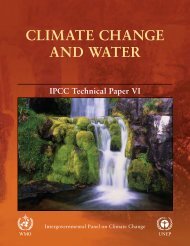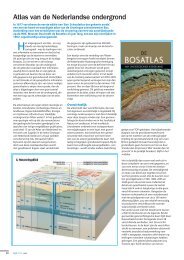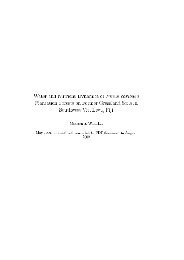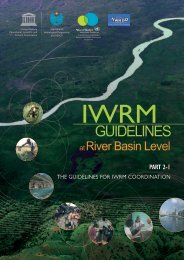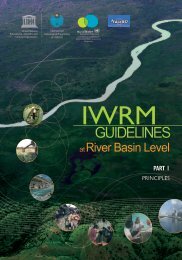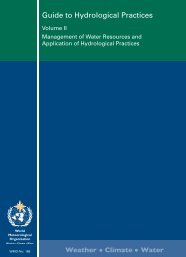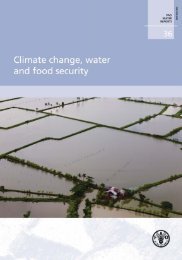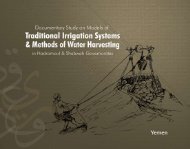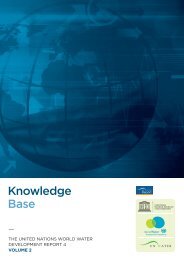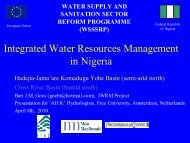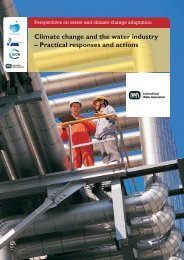Non-renewable groundwater resources: a ... - unesdoc - Unesco
Non-renewable groundwater resources: a ... - unesdoc - Unesco
Non-renewable groundwater resources: a ... - unesdoc - Unesco
- No tags were found...
You also want an ePaper? Increase the reach of your titles
YUMPU automatically turns print PDFs into web optimized ePapers that Google loves.
Case studiesDevelopment and managementof <strong>groundwater</strong>: regional casesSaudi Arabia aquifersWalid A. AbderrahmanIntroductionMost of Kingdom of Saudi Arabia (Figure 1) is arid. The average annual rainfall ranges from25 mm to 150 mm (MAW 1988) compared to the average annual evaporation that ranges from2,500 mm to about 4,500 mm. The country’s socio-economic development has been supportedin large measure by its intensive use of <strong>groundwater</strong> including non-<strong>renewable</strong> fossil water.This paper focuses on the country’s management and use of non-<strong>renewable</strong> <strong>groundwater</strong>for satisfying its national water demands and the tools it uses to minimize negative impacts onthe aquifers. Also discussed are issues of sustainability and the possible impacts of climatechange on water demands and thus on the continued development of the country.Water <strong>resources</strong> in Saudi ArabiaGroundwater in Saudi Arabia is found almost entirely in the many thick, highly permeableaquifers of large sedimentary basins of the Arabian Shield (Figure. 1), (Burdon 1982; MAW 1984).The estimated <strong>groundwater</strong> reserves down to a depth of 300 meters below ground surface areabout 2,185 billion cubic meters (BCM). The average annual recharge is about three orders ofmagnitude less than that, or about 2,762 million cubic meters (MCM).Groundwater is supplemented by desalinated water and treated wastewater. Saudi Arabiahas become the largest desalinated water producer in the world. The total annual waterproduction from desalination plants has increased from about 200 MCM in 1980 to over1,000 MCM today (Al-Husayyen 2002). The present production represents about 50% of thetotal current domestic and industrial demands, and most of the rest is met from <strong>groundwater</strong><strong>resources</strong>.63





